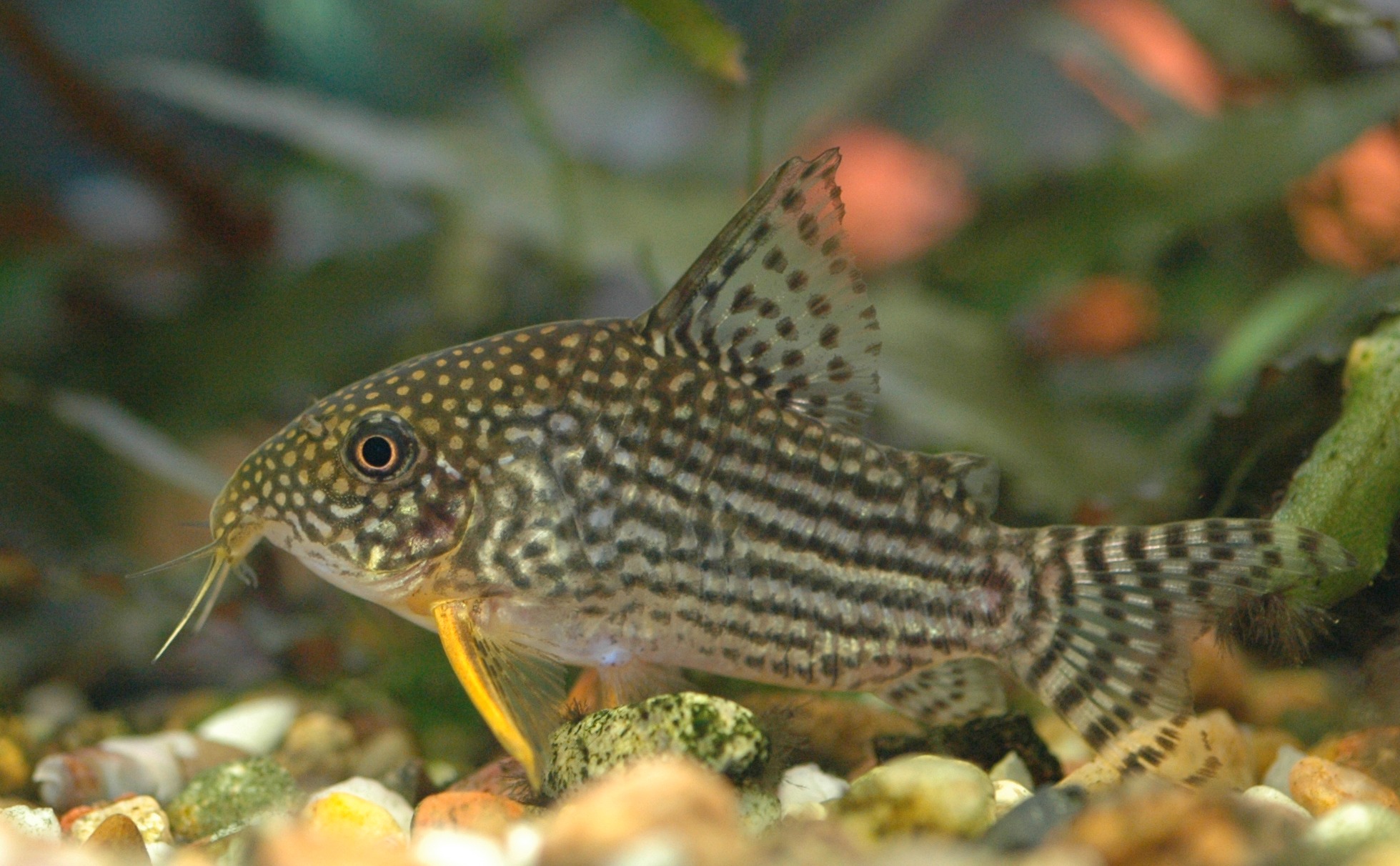Will Cory Catfish Eat Cherry Shrimp?
Cory catfish and cherry shrimps are both popular choices for aquarium enthusiasts. However, if you are considering keeping them together in the same tank, it’s important to understand the potential interactions between these two species. In this blog post, we will explore whether cory catfish will eat cherry shrimps and provide some insights to help you make an informed decision.
When it comes to creating a harmonious and balanced aquarium environment, compatibility between different species is crucial. While cory catfish and cherry shrimps can coexist in the same tank, there are certain factors to consider before introducing them together. One of the primary concerns is the possibility of cory catfish preying on cherry shrimps.
Cory catfish, also known as Corydoras, are bottom-dwelling fish that are generally peaceful in nature. They are well-known for their ability to scavenge the tank floor and keep it clean by consuming leftover food and debris. On the other hand, cherry shrimps are small, colorful invertebrates that are often kept for their aesthetic appeal and ability to control algae growth.
While cory catfish are not typically aggressive towards other tank mates, they are opportunistic feeders and may consume small organisms that come within their reach. This includes cherry shrimps, especially if they are small or weak. However, it’s important to note that not all cory catfish will exhibit this behavior, and some individuals may coexist peacefully with cherry shrimps without causing any harm.
Several factors can influence the likelihood of cory catfish preying on cherry shrimps. The size and temperament of the catfish, as well as the availability of alternative food sources, play a significant role. If the catfish are well-fed and have access to a varied diet, they are less likely to view cherry shrimps as a potential food source. Additionally, providing ample hiding places, such as plants or caves, for the shrimps can help minimize the risk of predation.
It’s also important to consider the size of the tank when deciding whether to keep cory catfish and cherry shrimps together. A larger tank with plenty of hiding spots and territories can provide a more suitable environment for both species. This allows the shrimps to establish their own territories and reduces the chances of them coming into direct contact with the catfish.
Cory Catfish
One of the fascinating aspects of Cory catfish is their social behavior. These fish are highly gregarious and thrive in groups. In their natural habitat, Cory catfish are found in the rivers and streams of South America, where they form tight-knit communities. Being part of a group provides them with a sense of security and allows them to exhibit their natural behaviors.
Within a Cory catfish group, there is a hierarchical structure. The dominant individuals, usually the largest and strongest, take charge and lead the group. They are responsible for finding food sources and protecting the group from potential predators. The subordinate members of the group follow the lead of the dominant fish and rely on their guidance for survival.
Another interesting behavior exhibited by Cory catfish is their ability to communicate with each other. They use a variety of signals and gestures to convey messages within the group. For example, when the dominant fish finds a food source, it will perform a specific dance-like movement, signaling to the others that it is time to eat. This synchronized feeding behavior ensures that all members of the group get their fair share of food.
In addition to their social nature, Cory catfish are also known for their vibrant colors. These fish come in a wide range of hues, including shades of orange, yellow, green, and black. Their colorful appearance is not only visually appealing but also serves as a form of communication. In the wild, the bright colors of Cory catfish help them blend in with their surroundings and avoid potential predators. In captivity, their vibrant hues add a splash of color to any aquarium, making them a popular choice among fish enthusiasts.
When it comes to feeding, Cory catfish are not picky eaters. They have a diverse diet that includes algae, small insects, worms, and even leftover fish food. This omnivorous nature makes them relatively easy to care for in an aquarium setting. However, it is important to provide them with a balanced diet to ensure their optimal health and growth.
Cherry shrimps
Cherry shrimps are fascinating creatures with unique behaviors that make them a delight to observe in an aquarium setting. One interesting behavior of cherry shrimps is their constant movement and exploration of their environment. They are highly active creatures, constantly foraging and searching for food. This behavior not only provides them with sustenance but also helps to keep the aquarium clean by consuming algae and detritus.
Another intriguing behavior of cherry shrimps is their social nature. They are known to live in large groups, forming a hierarchical structure within their community. In these groups, there is usually a dominant male and female who take charge of breeding and maintaining order. The other shrimps in the group follow their lead and work together to ensure the survival and well-being of the entire colony.
Cherry shrimps also exhibit interesting reproductive behaviors. They have a unique method of reproduction called “incomplete metamorphosis.” This means that the shrimps go through a series of molting stages before reaching their adult form. During the molting process, the shrimps shed their exoskeleton to allow for growth. This behavior is essential for their development and enables them to adapt to changes in their environment.
Furthermore, cherry shrimps are known for their intricate courtship rituals. When it is time to mate, the male shrimp will perform an elaborate dance to attract the female’s attention. This dance involves waving its antennae and moving its body in a rhythmic pattern. If the female is receptive, she will respond by reciprocating the dance. Once they have successfully courted, the female will lay eggs, which she carries under her abdomen until they hatch.
Compatibility Between Cory Catfish and Cherry Shrimps
When it comes to keeping cory catfish and cherry shrimps together, compatibility can vary depending on several factors. These factors include the size of the tank, the number of each species, and the availability of hiding places and food sources.
In general, cory catfish are not known to be aggressive towards cherry shrimps. They are more likely to ignore or coexist peacefully with them. However, there have been occasional reports of cory catfish preying on cherry shrimps, especially if the shrimps are very small or vulnerable.
It’s important to note that cory catfish have small mouths, and larger cherry shrimps are less likely to be targeted. Additionally, providing ample hiding places, such as plants or decorations, can help shrimps feel more secure and reduce the chances of predation.
Another important aspect to consider is the size of the tank. A larger tank with plenty of space can help create a more harmonious environment for both cory catfish and cherry shrimps. This allows each species to have their own territories and reduces the chances of aggression or competition for resources.
The number of each species also plays a role in their compatibility. It is generally recommended to keep a larger group of cherry shrimps, as they are social creatures and feel more secure in larger numbers. This can also help dilute any aggression from the cory catfish, as they are less likely to focus on a single shrimp when there are multiple individuals present.
Providing a varied diet is essential for the well-being of both cory catfish and cherry shrimps. While cory catfish are primarily bottom-dwelling scavengers, they also appreciate a diet that includes sinking pellets or wafers. On the other hand, cherry shrimps are omnivorous and require a mix of plant matter and protein-rich foods. Ensuring that both species have access to their preferred food sources can help prevent any potential conflicts arising from competition for food.
In conclusion, the compatibility between cory catfish and cherry shrimps can be achieved with proper care and consideration. Taking into account factors such as tank size, number of individuals, hiding places, and food sources can help create a harmonious and thriving aquatic community. By providing the right conditions, these two species can coexist peacefully and add beauty and diversity to your aquarium.
Feeding considerations play a crucial role in maintaining a harmonious cohabitation between cory catfish and cherry shrimps. While both species are scavengers, their dietary preferences and requirements differ slightly, making it necessary to provide a varied diet that caters to the specific needs of each species.
For the cory catfish, a well-balanced diet is essential to ensure their overall health and vitality. High-quality sinking pellets should form the staple of their diet, as these pellets are specifically formulated to meet the nutritional needs of bottom-dwelling fish. These pellets are usually rich in protein, vitamins, and minerals, providing the cory catfish with the necessary nutrients to thrive. Additionally, offering them a variety of frozen or live foods, such as bloodworms, brine shrimp, or daphnia, can help mimic their natural diet and provide them with additional protein and nutrients.
It is also beneficial to include occasional vegetable matter in the cory catfish’s diet. This can be achieved by offering blanched vegetables, such as zucchini or spinach, which provide essential fiber and aid in digestion. These vegetables can be secured to a weighted clip and placed in the aquarium, allowing the catfish to graze on them at their leisure.
On the other hand, cherry shrimps have a slightly different dietary requirement. Being primarily herbivorous, they rely on algae and detritus as their main sources of nutrition. To ensure that they receive adequate nutrition, it is important to provide them with suitable food sources. Algae wafers, specifically designed for herbivorous shrimp, can be offered to meet their dietary needs. These wafers are usually rich in algae and other plant-based ingredients, providing the shrimps with the necessary nutrients to thrive. Additionally, blanched vegetables, such as kale or cucumber, can also be provided to supplement their diet.
It is important to note that overfeeding should be avoided, as excess food can lead to water quality issues. Feeding small amounts multiple times a day is generally recommended, as it allows both species to feed without creating an excessive amount of waste. Observing the feeding habits of the fish and shrimps can also provide valuable insights into their dietary preferences and help fine-tune their feeding regimen.
By providing a varied diet that caters to the specific needs of both cory catfish and cherry shrimps, competition for food can be minimized, ensuring that both species receive adequate nutrition and thrive in the aquarium environment.

